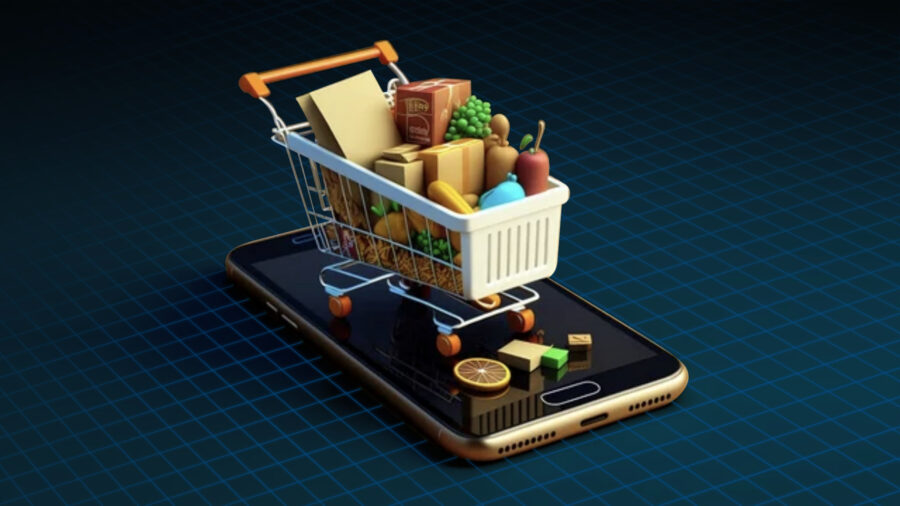Generative AI has been making waves across the retail industry and its place in grocery will be equally revolutionary. The area where this technology will have the biggest impact is online, where AI can help brands and retailers quickly build out informative product pages, create more effective marketing, and power improved search experiences — but they must first learn how to properly use this technology.
“The most important first step is for grocers to move rapidly up the learning curve in this transformative technology,” said Tal Jacobson, incoming CEO at Perion. “I think it is fair to say that in general, grocers are not early adopters of technology. An example is how slow they have been to move from print to digital circulars. Driven by this upskilling, grocers need to conduct an audit of their entire marketing ecosystem, and then map that to generative AI’s capabilities in each domain.”
Jacobson noted that generative AI holds potential across grocers’ entire ecosystem, including:
- Targeting and segmentation;
- Search;
- Loyalty programming;
- Promotional cadences; and
- The creation of advertising imagery using tools like Midjourney and Stable Diffusion.
Once these capabilities are understood and integrated, companies can utilize generative AI to develop marketing materials with greater speed than ever before. Guru Hariharan, CEO of CommerceIQ, noted that the right prompts can enable generative AI to “rapidly produce multiple versions of content that can then be A/B tested to optimize and improve results.”
Content Remains King
“For brands, content is also the biggest opportunity,” Hariharan added. “They can use AI to optimize their product pages to determine what messaging resonates with shoppers most effectively and see which content versions perform the best in organic search.”
Putting generative AI to use can improve websites overall. These tools can help retailers update their sites’ visual design more frequently to respond to granular shopping occasions or to simply ensure shoppers continuously benefit from a fresh experience, according to Hariharan.
Generative AI also holds promise in how it can enhance a site directly from the consumers’ perspectives. Hariharan suggested that this technology could be used to generate gift ideas or even recipes. Offering shoppers the ability to enter a partial list of ingredients, then have AI add the extra items needed to complete a recipe, could offer grocers a way to drive incremental sales while adding convenience for customers.
The technology also can be utilized to enable direct communication on a level never before possible. Jacobson noted that many consumers prefer text communication, and now generative AI has created the ability to send meaningfully personalized conversations on a scale that a team of humans could never achieve.
“Brands are now able to have informed, human-sounding conversations with consumers — real-time, scalable, two-way conversations for the first time in history,” said Jacobson. “For example, a brand can ask, ‘What did you have for dinner last night, and would you like a change of pace tonight?’ ChatGPT can answer and suggest recipes and put the necessary ingredients in a shopping cart.”
AI Rewards Loyalty, Too
The possibilities run even deeper for loyalty program members. Jacobson provided the example of directly asking loyalty members what they are interested in trying, then following up further to get “past the superficial nature of the first response.” This can enable even more customized loyalty promotions to drive loyalty and sales.
Despite all this promise, Hariharan noted that the technology is still in its early days, and whatever regulations will arise around it have yet to be clarified. For instance, custom image generation is highly customizable and can be utilized to generate imagery near instantly — but while there currently aren’t any copyright issues regarding the technology, that could potentially change in the future.
Another major development in the industry is retail media networks. Retail media networks offer another way to grow revenue and intersects with what generative AI can do. Retailers have been beneficiaries of improved search advertising capabilities while brands have earned greater reach with both new and existing audiences. Building out grocers’ tech stacks will be a key strategy for taking full advantage of these two growing opportunities.
“Tech partners are going to play an important role in optimizing retail media for brands, especially those that can automate routine actions in line with larger strategies,” said Hariharan. “Search will play an important role with a high ROI, but as brands become more comfortable with tracking different shopper segments based on purchasing and browsing behavior, DSP is growing in popularity, especially when used in conjunction with search.”












